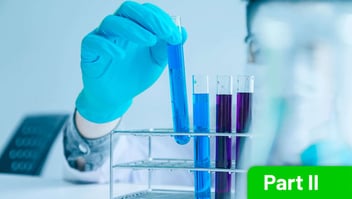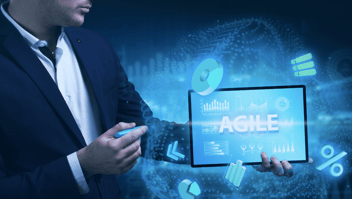What are the hallmarks of a successful research lab? It's one that not only achieves its scientific objectives effectively and efficiently but also upholds stringent standards of quality, safety, and compliance. A successful biotech lab consistently produces high-quality research outcomes and contributes to scientific advancements. Such achievement hinges on proficiency in experimental design, execution, and data analysis, fostering a culture of innovation and intellectual rigor.
What ingredients form the foundation of a thriving lab? A blend of cutting-edge technology, a skilled team, well-equipped facilities, effective project management, and regulatory compliance bring novel discoveries to market and positively impact society. None of this, however, is possible without access to essential lab resources like reagents, equipment, consumables, and biologicals.
At the core of a flourishing lab lie its supplies. Without them, experiments cannot proceed, and products cannot be commercialized. These supplies must meet criteria of affordability, specificity, availability, and quality. Lab supply purchasing is an art and a science, requiring a distinct subset of skills. Unless you’re in procurement, odds are you never received direct training applicable to strategic lab supply purchasing. Unlike conventional procurement, lab supply purchasing necessitates its own set of requirements, processes, and nuances.
The following guide offers a crash course on lab supply purchasing and how to master it using modern advancements, contributing to the resilient, successful research lab your experiments deserve.
The importance of understanding lab supply purchasing
Lab supply purchasing directly contributes to the success of research endeavors by providing scientists with the tools and resources they need to meet milestone achievements. No longer just transactional, it is a strategic function that fuels discovery.
Go deeper: A Brief History of Procurement: Where Procurement Has Been & Where It Needs To Go
To optimize research operations and fuel scientific excellence, it is critical to fully understand the components, processes, and challenges associated with the lab supply procurement process.
Definition of lab supply purchasing
Lab supply purchasing applies to the procurement of essential supplies and equipment needed for scientific research. While there are many spend categories, such as chemicals, glassware, equipment, consumables, biological materials, safety gear, furniture, and calibration tools, the items to be purchased are indispensable for conducting experiments and investigations.
Differences between general procurement and lab supply purchasing
Lab supply purchasing focuses specifically on acquiring materials for research purposes, while general procurement encompasses the broader range of goods and services needed for overall organizational functioning.
|
General Procurement Categories
|
Lab Supply Procurement Categories
|
|
Office Supplies
|
Chemicals
|
|
Furniture
|
Glassware and Plasticware
|
|
IT Equipment and Software
|
Laboratory Equipment
|
|
Marketing Materials
|
Consumables (e.g., filters, membranes)
|
|
Services (e.g., consulting, maintenance)
|
Biological Materials (e.g., cell lines, antibodies)
|
|
Facilities Management
|
Safety and Personal Protective Equipment (PPE)
|
|
Travel and Accommodation
|
Laboratory Furniture and Storage
|
|
Utilities
|
Calibration and Measurement Tools
|
|
Packaging Materials
|
Instrumentation
|
The primary difference between the two procurement types is that lab supply purchasing often requires expertise in scientific instrumentation, chemical compatibility, regulatory compliance, and other areas to source items.
Key stakeholders in the lab supply purchasing process
There are many stakeholders involved in the lab supply purchasing process, with the size or stage of lab impacting how many different functions are involved. Early-stage biotech lab supply purchasing may only include researchers, suppliers, and finance, while mid- to late-stage biotech and pharma scale to encompass more stakeholder groups.
- Researchers/scientists are the primary users of lab supplies and provide input on specific requirements.
- Lab managers oversee day-to-day lab operations, including inventory management, procurement decisions, and compliance with safety regulations.
- Procurement professionals are responsible for sourcing suppliers, negotiating contracts, and managing the purchasing process to ensure timely delivery of supplies while optimizing resources.
- Finance manages the lab supply budget, approves purchase orders (POs), and tracks expenses.
- Administrative staff may assist with administrative tasks related to procurement, such as PO processing, vendor contract management, and purchasing record maintenance.
- Suppliers provide the necessary supplies, equipment, and services.
- Technology partners provide software platforms that automate and streamline the purchasing process.
- End users are anyone who directly uses the lab supplies for experiments, research, or other scientific activities.
Go Deeper: Lab Supply Ordering Scalability
Key components of the lab supply purchasing process

The lab supply purchasing cycle is an involved process, comprised of multiple important components, including:
- Research requirements identification. Using factors such as experimental protocols, sample types, and analytical techniques, scientists identify the specific products, materials, and equipment they need for their research. Then, they establish specifications to ensure that the selected items meet quality and performance standards, as well as comply with regulations.
- Supplier selection and evaluation. After building the list, reliable suppliers capable of providing high-quality materials and equipment must be identified. Supplier selection must consider quality, pricing, reliability, availability, and customer service. If the lab has not ordered from the supplier before, the supplier must be vetted, contracted with, and added to the system before placing an order. Establishing preferred supplier relationships and negotiating favorable terms are key aspects of supplier selection.
Go Deeper: Supplier Onboarding: How Labs can Offload the Supplier Addition Process - PO generation and placement. After supplier selection, POs are generated and then routed for approval, specifying the quantities, pricing, and delivery dates for the required items. POs serve as contractual agreements between the lab and the supplier, outlining the terms and conditions of the purchase. Efficient order processing requires coordination between ordering users and suppliers to ensure accurate fulfillment and delivery of orders within research timelines.
- Order fulfillment, tracking, and delivery. Upon PO receipt, suppliers fulfill orders by packaging and shipping the items to the lab. Labs track the status of orders and coordinate with suppliers to ensure timely delivery. Clear communication and collaboration between lab personnel and suppliers are essential for resolving any issues or delays in order fulfillment.
- Inventory management and control. Labs must maintain accurate records of inventory levels, track usage patterns, and anticipate future demand to avoid stockouts and delays. Implementing inventory control measures, such as barcode scanning and automated replenishment systems, can help streamline inventory management and ensure that essential supplies are always available when needed.
- Receipt and inspection of goods. Upon order delivery, labs inspect the shipment to ensure it meets quality and quantity requirements, which involves verifying product specs, checking for damage or defects, and reconciling received items with POs. Prompt inspection is essential for follow-up, such as returns, with suppliers if necessary.
- Invoice processing and payment. After received goods are accepted, labs initiate the payment process by processing supplier invoices. This involves verifying invoice accuracy, reconciling invoices with POs and delivery receipts, and approving invoices for payment.
Use of automation and software in lab supply purchasing
Process automation can reduce manual tasks, minimize errors, and improve overall efficiency, ultimately enhancing the research productivity and lowering operating costs. Through the automation of repetitive tasks and integration of backend systems, labs can optimize their purchasing workflows and focus more on scientific research and discovery.
Different types of software in lab supply purchasing
|
Software/Platform Type
|
Description
|
|
Inventory management software
|
Tracks inventory levels, manages stock, and automates reorders.
|
|
Procure-to-pay platforms (P2P)
|
Streamlines the purchasing process, from requisition to payment, and facilitates supplier management and contract negotiations.
|
|
Electronic lab notebooks (ELN)
|
Digital platforms for recording, organizing, and sharing lab data and experiment records, which may include inventory tracking features.
|
|
Laboratory information management systems (LIMS)
|
Comprehensive solutions that manage all aspects of lab ops, including sample tracking, data management, and inventory control.
|
|
Supplier relationship management (SRM) software
|
Tools for managing relationships with suppliers, including communication, performance evaluation, and contract management.
|
|
Enterprise resource planning (ERP) systems
|
Integrated solutions that manage various business processes, including HR, finance, and inventory management.
|
|
Accounting software
|
Manage financial transactions, tracks expenses, and
generates financial reports.
|
|
Lab supply marketplaces
|
Simplifies and automates lab supply purchasing, offering a vast range of supplies from a wide supplier base, providing easier product identification, competitive pricing, streamlined ordering processes, and simplified billing.
|
Benefits of strategic lab supply purchasing
Lab supply purchasing is not just about acquiring materials and equipment. When done right, it becomes a strategic advantage that accelerates research and discovery. Organizations that aim to optimize the lab supply purchasing process can benefit in various ways:
- Minimized delays and disruptions. Efficient lab supply purchasing ensures that researchers have timely access to the materials and equipment needed to conduct experiments without unnecessary delays or disruptions.
- Increased cost and time savings. Optimizing purchasing processes and negotiating favorable terms with suppliers leads to cost savings on labor and supplies, allowing labs to allocate resources more effectively and reinvest in other areas of research and development.
- Improved research productivity. Streamlined purchasing workflows and timely delivery of supplies frees up researchers’ time to focus more on scientific experimentation and data analysis, leading to accelerated discovery and innovation.
- Better inventory management. Effective inventory management practices and more efficient purchasing enables optimal inventory level maintenance and avoids stockouts, making sure that essential supplies are always available when needed.
- Stronger supplier relationships. Establishing strong relationships with reliable suppliers fosters collaboration and trust, leading to improved service levels, increased innovation, and better pricing terms.
- Better regulatory compliance. Efficient lab supply purchasing management ensures that materials and equipment meet regulatory specifications and compliance requirements, reducing the risk of non-compliance and associated penalties.
Go Deeper: The Secret to Fully Unlock Digital Procurement for R&D
Lab supply purchasing challenges
The life science industry has unique requirements, resulting in a constant struggle between supplier consolidation and scientific product choice, as well as a growing longtail.
- Niche product requirements. R&D projects often involve unique or specialized products that may not be readily available from preferred suppliers or existing PunchOut catalogs. Identifying the right products and ensuring compatibility with experimental protocols and regulatory requirements can be challenging, particularly for researchers with limited technical expertise in purchasing.
- Supplier management. Choosing the right suppliers can be a daunting task, especially given the wide range of products and services available in the market. Suppliers must be evaluated on factors such as quality, availability, pricing, reliability, and customer service to ensure continuous access to high-quality materials and equipment. Further, ongoing management of hundreds or even thousands of suppliers is time-consuming and inefficient, requiring account setup, payment term management, invoicing, and contract negotiations.
- Catalog management. Supplier catalogs and product pricing are subject to frequent changes, making real-time catalog upkeep difficult. Historically, catalog updates have been the suppliers’ responsibility, but many lack the resources and technology to keep data current, which slows down the procurement process.
- Supply chain risk. In life sciences, customer spend is often concentrated among a handful of major suppliers, placing a lab’s supply chain at risk in the event of unexpected regional, global, or production disruptions, as well as driving up price due to lack of competition.
- Budget constraints. R&D budgets may be limited or subject to fluctuations, requiring careful cost management and strategic procurement to optimize spend while still acquiring necessary supplies and equipment.
- Inventory management. A balance must be struck between maintaining adequate stock levels and avoiding overstocking and obsolescence, which can tie up valuable resources and increase storage costs.
- Technological complexity. Rapid advancements in technology and scientific research may require R&D labs to continually evaluate and adopt new lab supplies and equipment.
- Lack of resource availability. Shifting market conditions and fluctuations in funding in life sciences, sometimes resulting in layoffs in research. Scientists and lab ops may be responsible for lab supply purchasing, as well as scientific research, an inefficient use of resources.
Addressing these challenges requires proactive management and strategic planning to optimize lab supply purchasing processes effectively. By leveraging technology, fostering supplier relationships, and prioritizing compliance and cost-effectiveness, labs can overcome these challenges and support their research objectives more efficiently.
Lab supply purchasing best practices
Addressing the challenges inherent in the lab supply purchasing arena requires proactive management and strategic management, as well as adoption of key technology. Lab supply purchasing best practices include:
- Strategic planning. Develop a comprehensive purchasing plan aligned with research objectives, budgetary constraints, and regulatory requirements. Prioritize purchases based on criticality and urgency, and establish clear procurement policies and procedures to guide decision-making.
- Supplier relationship management. Cultivate strong relationships with a wide variety of reliable suppliers who understand the unique needs of life sciences. Communicate openly and transparently, negotiate favorable pricing terms, and collaborate on product development and innovation initiatives.
- Compliance assurance. Ensure that purchased materials and equipment comply with regulatory requirements and quality standards relevant to scientific research. Establish robust vendor qualification processes, perform regular audits and inspections, and maintain detailed documentation of procurement activities.
- Cost optimization. Implement cost-saving measures such as bulk purchasing, volume discounts, and strategic sourcing to maximize purchasing power and reduce overall costs. Monitor spending patterns, identify savings areas, and negotiate competitive pricing.
- Continuous improvement. Regularly evaluate and refine purchasing processes to enhance efficiency, effectiveness, and compliance. Solicit feedback from stakeholders, benchmark performance, and implement best practices to drive continuous improvement.
- Technology adoption. Embrace digital tools and automation solutions to streamline lab supply purchasing processes and improve efficiency. Leverage online lab supply marketplaces, P2P platforms, inventory management software, and ERP platforms to optimize workflows and reduce administrative burdens
Go Deeper: eBook - 6 Key Lab Supply Purchasing Pains and Solutions
The future of lab supply purchasing
As scientific research becomes increasingly complex and competitive, the need for efficient and agile procurement solutions becomes even more critical. Key trends and technologies shaping the future of lab supply purchasing include:
- Artificial intelligence and machine learning. The adoption of digital technologies is revolutionizing lab supply purchasing processes. Labs and their technology partners are leveraging digital platforms and data analytics tools to optimize inventory management, automate procurement workflows, and make data-driven purchasing decisions.
Go Deeper: The AI-powered lab supply marketplace: How AI is improving the customer buying journey - Supply chain resilience. The COVID-19 pandemic highlighted the importance of supply chain resilience and risk management in lab supply purchasing. Labs are diversifying their supplier networks, implementing contingency plans, and investing in real-time supply chain visibility solutions to mitigate disruptions and ensure business continuity.
Go Deeper: Supplier Diversification Tips for a Cost-Effective, Resilient Lab Supply Chain - Sustainable sourcing. Labs are prioritizing suppliers that adhere to ethical and sustainable practices, minimize environmental impact, and support initiatives such as circular economy and green chemistry.
- Collaborative innovation. Collaboration between laboratories, suppliers, and technology partners is driving innovation in lab supply purchasing. Open innovation platforms, co-development projects, and joint research initiatives are facilitating the co-creation of customized solutions that address the unique needs of scientific research.
- Regulatory compliance. The regulatory landscape governing lab supply purchasing is evolving rapidly, with increased scrutiny on product safety, traceability, and transparency. Labs are proactively adapting to regulatory changes, implementing compliance management systems, and ensuring adherence to relevant standards and regulations.
- Personalized procurement. Advances in data analytics and personalized medicine are driving demand for customized lab supply purchasing solutions. Labs and their technology partners are leveraging predictive analytics and machine learning algorithms to tailor procurement strategies and optimize resource allocation.
By staying ahead of emerging trends and leveraging cutting-edge tech, labs can optimize the procurement process in a way that contributes to the global scientific community's quest for knowledge and discovery.
Lab Supply Purchasing FAQs
What is lab supply purchasing?
Lab supply purchasing refers to the process of acquiring materials, equipment, and services needed for scientific research activities conducted in laboratory settings. This includes sourcing, procurement, inventory management, and supplier relationship management.
Why is strategic lab supply purchasing important?
Strategic lab supply purchasing is crucial for supporting scientific research objectives, optimizing resource utilization, minimizing supply chain risk, contributing to innovation, and ensuring research continuity. It empowers labs to acquire high-quality materials and equipment in a timely and cost-effective manner that speeds time-to-milestone achievements.
How can labs optimize their lab supply purchasing processes?
Labs can optimize their lab supply purchasing processes by adopting best practices such as strategic planning, supplier relationship management, technology adoption, compliance assurance, cost optimization, and continuous improvement. By streamlining and automating procurement workflows, leveraging digital tools, and collaborating with suppliers, labs can turn their purchasing operations into a competitive advantage.
What are some challenges seen in lab supply purchasing?
Common challenges in lab supply purchasing include niche product requirements that contribute to growing longtail, supplier management, budget constraints, inventory management, regulatory compliance, fluctuating funding, resource availability, and technological complexity. Labs must address these challenges proactively and strategically to optimize their purchasing processes and support their research objectives effectively.
How is the future of lab supply purchasing evolving?
The future of lab supply purchasing is evolving through digital transformation, artificial intelligence and machine learning, supply chain resilience, sustainable sourcing, collaborative innovation, regulatory compliance, and personalized procurement. Labs that embrace these trends and technologies will be able to navigate the complexities of scientific research more efficiently and drive future advancements in their respective fields.
Conclusion
Lab supply purchasing is no longer merely transactional; it's the lifeblood of scientific research operations and essential for groundbreaking discoveries. The future of lab supply purchasing is characterized by innovation, sustainability, and collaboration. Labs that embrace digital transformation, prioritize supply chain resilience, and adapt to regulatory changes will be well-positioned to navigate the evolving scientific landscape and contribute to the global scientific community's quest for understanding and innovation.
Learn how ZAGENO can help revolutionize your lab supply purchasing process.
Maximize your research potential and reduce administrative burden with ZAGENO, the industry’s largest AI-driven lab supply marketplace — simple to use, yet tailor-made to life science’s unique purchasing needs. Contact ZAGENO today for a personalized demo.




